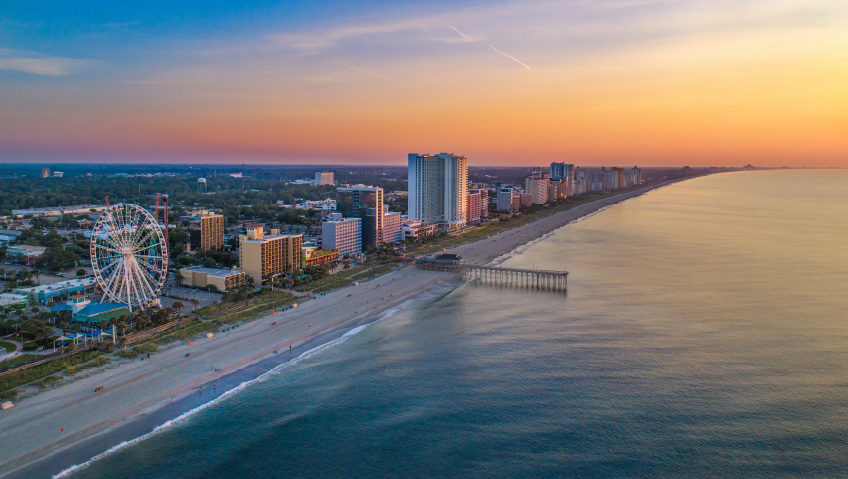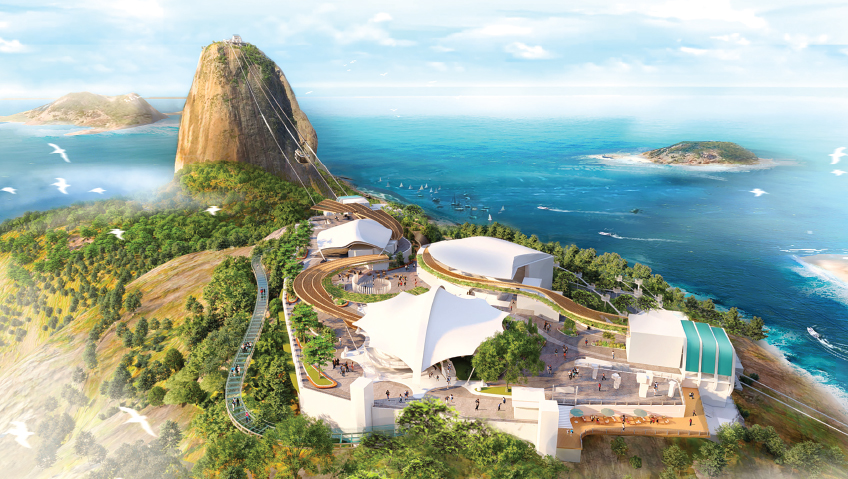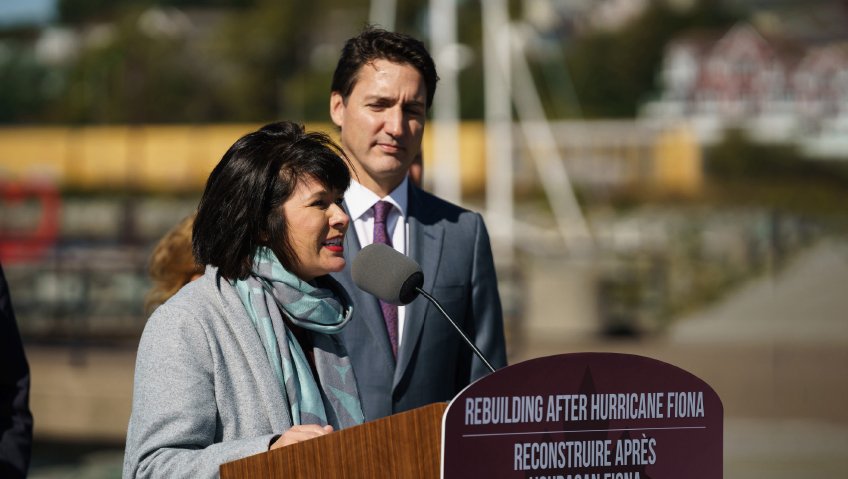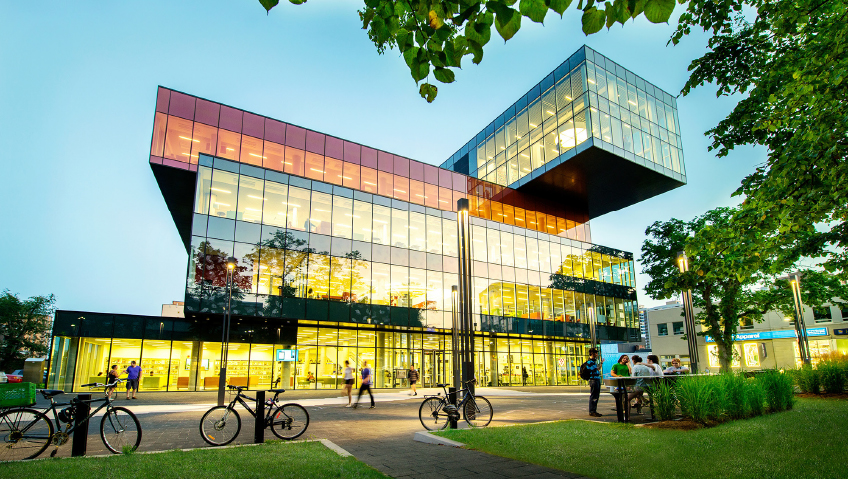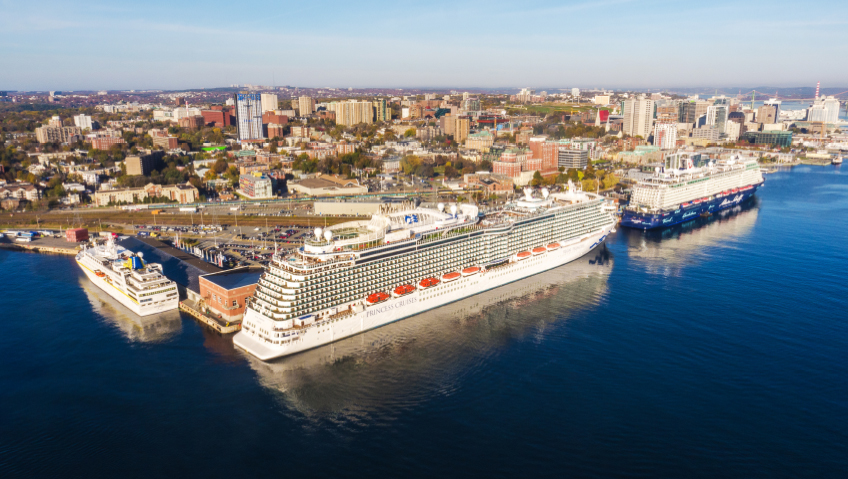As a place to call home, the Myrtle Beach region in Horry County, South Carolina truly boasts something for everyone. It’s affordable, picturesque, and a competitive business market, amounting to a quality of life that attracts people from near and far.
While visitors come for the idyllic beach and the energy of downtown Myrtle Beach, many people stay for the way of life and the economic opportunity and promise, which is why it is ranked as the fastest growing city in the U.S. by U.S. News and World Report for the third year in a row.
As people began working from home during the pandemic, many realized there were better places to live. With so many drawn to the natural beauty and moderate cost of living in the area, and the many amenities offered, the conditions were ripe for growth.
“We’ve had a lot of people move here in the last two and a half years, but we continue to see growth. We’ve reached an all-time high with both visitors and population,” says Sandy Davis, President and CEO of the Myrtle Beach Regional Economic Development Corporation (MBREDC), which has, in turn, made housing a priority.
Of course, there is an acknowledgment that growing too fast can be a challenge so Davis and other leaders at the local and county levels are “planning ahead so we don’t have to catch up. We’re trying to forecast that a bit better and do a better job of controlling what we already have.”
It’s an exciting time for the Myrtle Beach region, economically speaking, and MBREDC and its partners are doing all they can to take advantage of opportunities that arise. One project, in particular, is the Firmina subsea cable project which is wholly owned by Google and will have a mammoth impact on the region.
The fiber-optic subsea cable will span 9,020 miles, running from Myrtle Beach to Argentina with landings in Brazil and Uruguay, making it the world’s longest single-source cable to South America. South Carolina was selected for its strategic location between other cable landings in Florida and Virginia Beach.
As part of this project, Myrtle Beach will benefit from a $31.5 million investment by DC BLOX, Inc. in a data center that will serve as a cable landing station (CLS) for the project. The value of this project to the region is likely to exceed $400 million.
DC BLOX has purchased 21.12 acres in Horry County’s International Technology and Aerospace Park and is set to open in the second quarter of 2023. The facility will have the capacity to support up to five subsea cables.
The cable makes the region ever more attractive to business and industry, especially tech companies, as it can operate from a single power source if other power sources become unavailable, meaning more reliable, redundant service.
“It ties a lot of different people in the tech world together and it seems that companies like Netflix, Hulu, Facebook, Instagram, Gmail, and YouTube, like to be close to these subsea cables because it offers a lot faster service with fewer interruptions,” says Davis.
The impact of the cable is yet to be felt, but Davis is optimistic. “It will depend on how many companies will want to utilize that and move to our area. Some companies may just choose to use the data center DC BLOX. They’ll house people in their facility. And some people may choose to actually build a facility, house their own equipment, and have their own people run it.”
Davis aptly equates the project’s magnitude to being selected for a new exit on an interstate project. The thing about exits is that while they open the door to opportunity and growth, like most opportunities, effort needs to be taken to make the most of them.
Luckily, MBREDC has the energy and desire to take advantage of the opportunity by promoting the room to grow that the area offers (Horry County is the size of Rhode Island and is characterized by so much more than just the beach), and the countless other assets that are available to investors and business owners.
Davis has been thinking of ways to support employers now that many people work from home, particularly since Myrtle Beach and Horry County have become such a desired destination. She poses an interesting question, “How do you compensate companies who allow employees to work from home, yet they’re not in your area, even though the employees live in your area?”
While this idea is investigated further, in the meantime, the focus remains on businesses within the regional boundaries, many of which are already making good on the existing opportunities.
In addition to the subsea cable project, many other businesses thrive in Myrtle Beach and Horry County. What’s more, businesses across industries and sectors are finding success.
Wild West of Myrtle Beach, Inc., a boots and Western apparel retailer, is investing $2.5 million to grow its physical footprint and team of employees. The plan is to add 50,000 square feet of distribution space to its operations and 40 new employees over the next five years to support its e-commerce platform.
Carolina Food Service is another local employer showing its faith in the community. The independently owned, full-service food distributor is investing $3.78 million over the next five years, an investment that will include taking up nine more acres in the Loris Commerce Park and the addition of 71 employees.
Without a doubt, conditions for growth are prime and the support and willingness of local leaders and organizations like MBREDC make economic success and prosperity highly attainable in the Myrtle Beach region and Horry County. One way this is being done is through workforce development efforts.
Committed to the importance of human resources, MBREDC works with local educational institutions on workforce development initiatives to ensure that there’s a trained workforce available to support growth and expansion activities, particularly in the skilled trades and manufacturing sectors.
As early as eighth grade, children are being exposed to a variety of career opportunities in the region to promote what careers are available and in demand. The goal is not only to showcase industry and its opportunities but also to bring the community together to promote growth and make economic success possible in the long term.
In the Myrtle Beach region, everyone is important, from those who work from home to those in manufacturing, professional services, retail, and more, which is why efforts are underway to ensure there’s something for everyone. “We’re diversifying, but we’ve found a way to diversify and still maintain the destination area,” says Davis.
In fact, diversity and inclusiveness are cornerstones of the quality of life in the Myrtle Beach region and enhance the experiences of all, whether living, working, investing, or visiting. While you might come for the beach, you’ll find a million reasons to stay. MBREDC and its partners are making sure of that.

